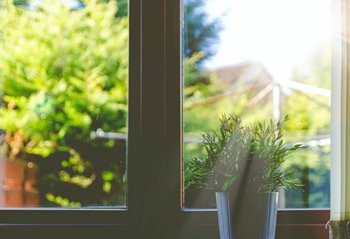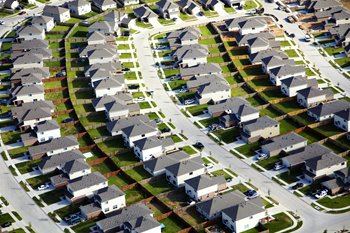March 21, 2020
author: Jim Bohn
Ventilation – Does your home have FRESH AIR?
Ventilation is a term most of us know when it comes to our residential heating and cooling system. Although this is one way to be sure your home has a temperature control and air movement, it really is not a ventilation system. Yes, it moves air within your home, but what you are missing is the opportunity for FRESH AIR in your home. Merriam-Webster’s definition of ventilation is “a system or means of providing fresh air”. There are many articles and health statistics about unhealthy indoor air in our homes and how we are spending more time indoors than outdoors today. Outdoor air is healthier and you need to do something about your indoor air so you can have the “fresh air” from the outdoors inside your home.
 You most likely have a high-efficiency HVAC or furnace/air conditioner, which is your source of air movement within your home. But where is the fresh air you also need? HVAC manufacturers developed these high-efficiency systems to allow you to run them constantly cost-effectively, but high-efficiency furnaces do not ventilate air between the inside and outside of your home. The venting pipe or flue is attached to the exchanger in your furnace and exhausts the combustion gases that are built up inside the heat exchanger of the furnace. Furnaces simply move the air within your home around to provide the warm or cool temperature comfort you desire.
You most likely have a high-efficiency HVAC or furnace/air conditioner, which is your source of air movement within your home. But where is the fresh air you also need? HVAC manufacturers developed these high-efficiency systems to allow you to run them constantly cost-effectively, but high-efficiency furnaces do not ventilate air between the inside and outside of your home. The venting pipe or flue is attached to the exchanger in your furnace and exhausts the combustion gases that are built up inside the heat exchanger of the furnace. Furnaces simply move the air within your home around to provide the warm or cool temperature comfort you desire.
So, how does fresh air naturally get into your home? There are several ways air gets in - depending upon the air tightness of your home and on the type of windows, doors, caulking and amount of insulation you have in your home. The better the high-quality windows, doors and insulation you have the tighter your home is. Although a tight home helps keep your energy bills under control and provides safety for your home, tighter homes do not provide ways for fresh air to get into your home. Older homes have natural air leaks due to older windows, doors, little insulation and minimal caulking. The other conventional way air gets in is by opening windows or simply going in and out of your exterior doors. Which isn’t ideal because you cannot open your windows year-round, you may not want to bring in dust an allergens, nor do you go in and out of your home frequently. So how do you get fresh, clean air into your home?
Let’s look at what you have today in your home. You currently have several ventilation products that are very important in removing moisture, odor, humidity and airborne particulates from your bathroom, workout space, mud and laundry rooms to help control the growth of mold and mildew. What about the range hood in your kitchen? It also helps remove moisture, odor, humidity and airborne cooking particulates, when ducted to the outside. Each of these ventilation systems is critical for the air quality in your home. But did you know every time you turn on one of your ventilation systems it creates a negative air pressure (lower air pressure inside  than outside) in your home because there is no new air replacing the ventilated air. The United States Environmental Protection Agency (EPA) website provides information on INDOOR AIR QUALITY (IAQ) and indicates “If too little outdoor air enters indoors, pollutants can accumulate to levels that can pose health and comfort problems. Unless buildings are built with special mechanical means of ventilation, those designed and constructed to minimize the amount of outdoor air that can "leak" in and out may have higher indoor pollutant levels”. What does mean for you? The American Journal of Lifestyle Medicine published an article called “Indoor Air Quality”, Joseph M. Seguel, MD, Richard Merrill, DO and Dana Seguel, NP, June 15, 2016, https://doi.org/10.1177%2F1559827616653343 that states, “Many health care providers are concerned with the role environmental exposures play in the development of respiratory disease. While most individuals understand that outdoor air quality is important to their health status, many are unaware of the detrimental effects indoor air pollution can potentially have on them. According to the EPA, indoor levels of pollutants may be up to 100 times higher than outdoor pollutant levels and have been ranked among the top 5 environmental risks to the public. There has been a strong correlation between air quality and health, which is why it is crucial to obtain a complete environmental exposure history from a patient. This article focuses on the effects indoor air quality has on the respiratory system. Health problems resulting from poor indoor air quality are not easily recognized and may affect a patient’s health years after the onset of exposure”.
than outside) in your home because there is no new air replacing the ventilated air. The United States Environmental Protection Agency (EPA) website provides information on INDOOR AIR QUALITY (IAQ) and indicates “If too little outdoor air enters indoors, pollutants can accumulate to levels that can pose health and comfort problems. Unless buildings are built with special mechanical means of ventilation, those designed and constructed to minimize the amount of outdoor air that can "leak" in and out may have higher indoor pollutant levels”. What does mean for you? The American Journal of Lifestyle Medicine published an article called “Indoor Air Quality”, Joseph M. Seguel, MD, Richard Merrill, DO and Dana Seguel, NP, June 15, 2016, https://doi.org/10.1177%2F1559827616653343 that states, “Many health care providers are concerned with the role environmental exposures play in the development of respiratory disease. While most individuals understand that outdoor air quality is important to their health status, many are unaware of the detrimental effects indoor air pollution can potentially have on them. According to the EPA, indoor levels of pollutants may be up to 100 times higher than outdoor pollutant levels and have been ranked among the top 5 environmental risks to the public. There has been a strong correlation between air quality and health, which is why it is crucial to obtain a complete environmental exposure history from a patient. This article focuses on the effects indoor air quality has on the respiratory system. Health problems resulting from poor indoor air quality are not easily recognized and may affect a patient’s health years after the onset of exposure”.
Fresh air is critical to all of us and we need to be sure we are doing something about it. Think about your current home situation and what you can do to improve your IAQ. Do you know what causes the bad air in your home?

 English
English
 English
English